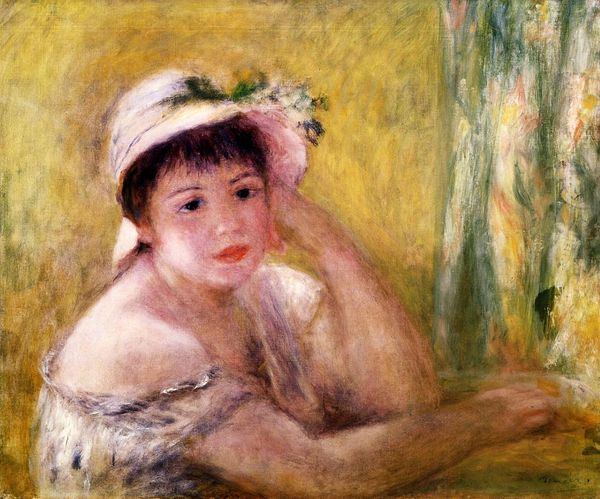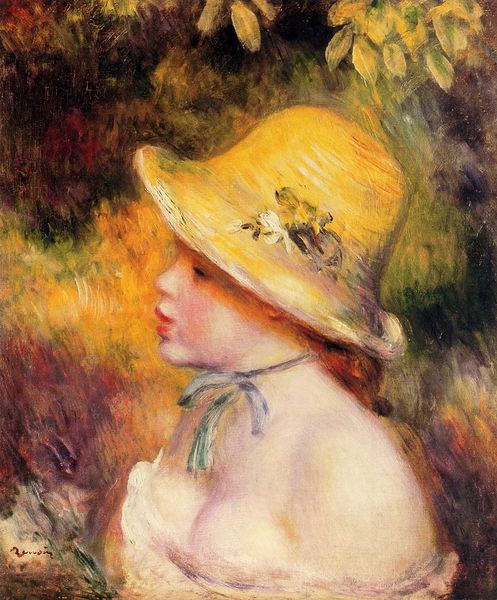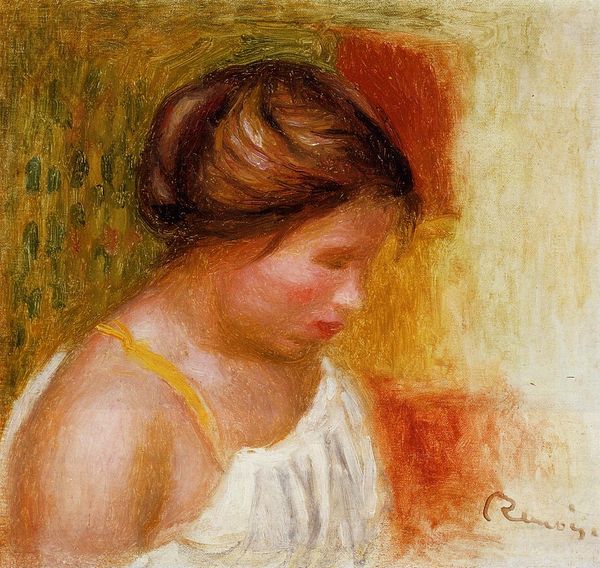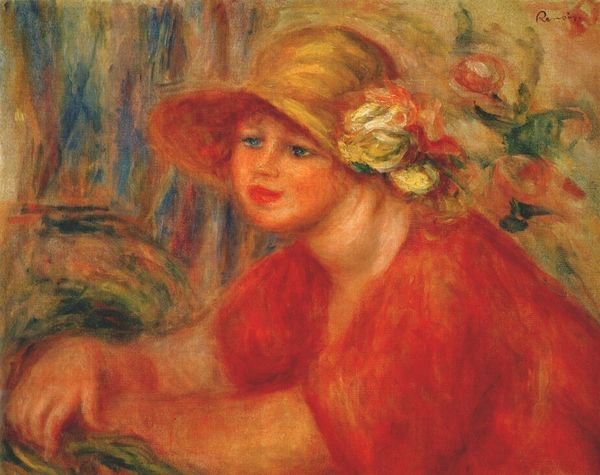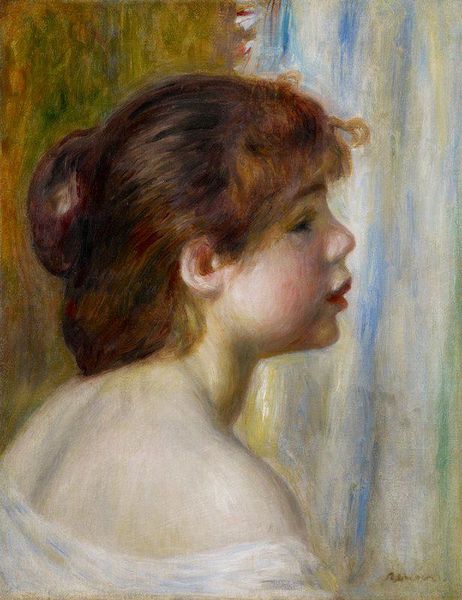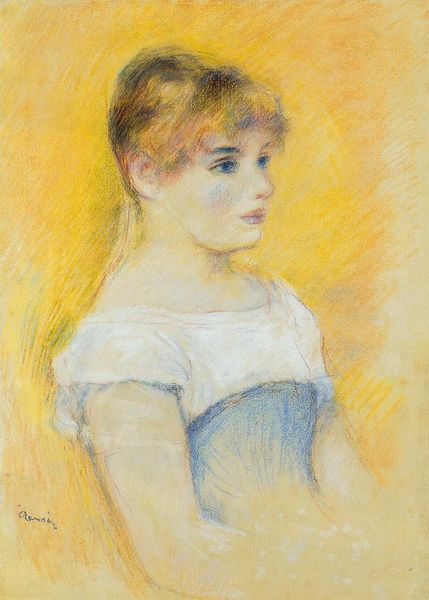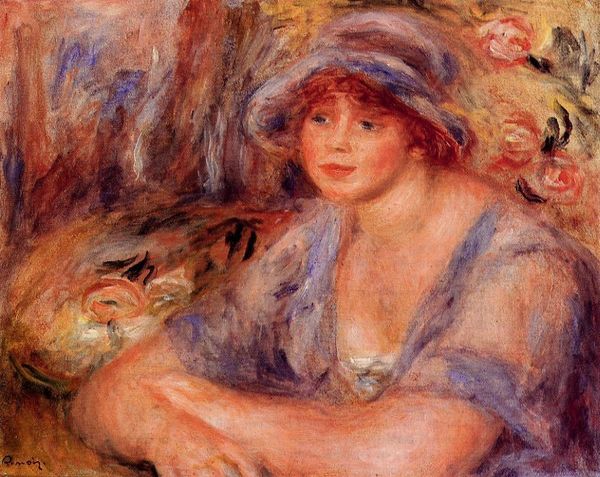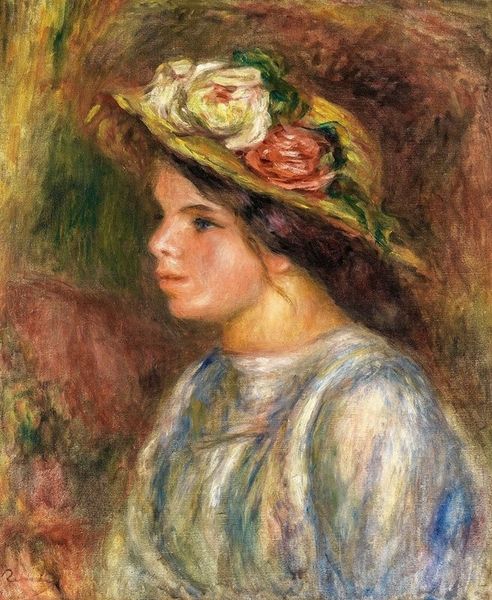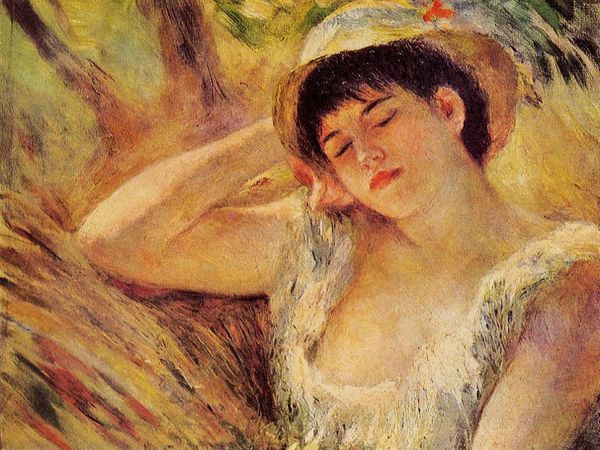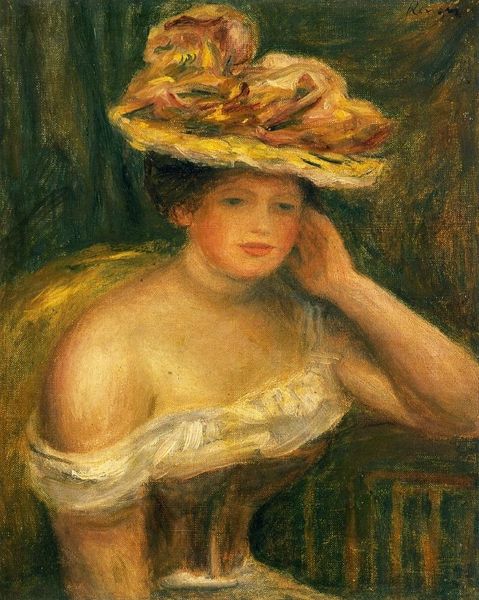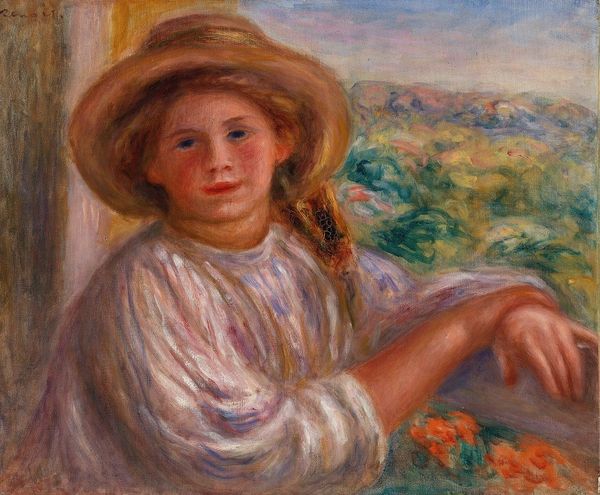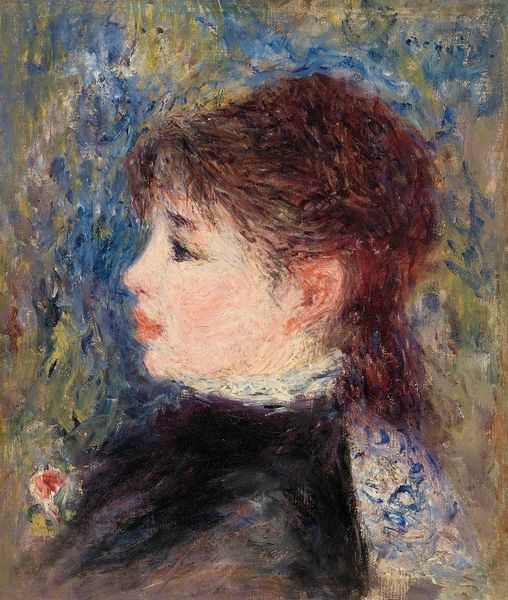
Copyright: Public domain
Editor: This is Renoir's "Woman in a Straw Hat," painted in 1880 using oil paint. I find it really dreamy, almost like she's lost in thought in a field of flowers. What do you see in this piece? Curator: I see a portrait that, on the surface, embodies Impressionist ideals: capturing fleeting moments of light and beauty. But when considering it from a feminist perspective, it makes me wonder: who was this woman? How does Renoir's gaze – as a male artist in the 19th century – shape our perception of her identity? Editor: That’s interesting! I hadn't considered the power dynamic at play. Curator: Exactly. The "straw hat" becomes less about rural leisure and more about class and social expectations. Who had the privilege of leisure? Whose stories are historically absent from these scenes? The brushstrokes are beautiful, yes, but they also participated in constructing a particular image of women and femininity. Do you think her gaze is confrontational, submissive, or something else entirely? Editor: I think she looks contemplative, maybe a little sad even. But I see what you mean, she’s an object of beauty here. The question of her perspective almost feels… secondary. Curator: And that tension – the beauty versus the social reality – is where the real dialogue begins. It asks us to challenge art historical narratives and consider who is seen, who is unseen, and who is doing the seeing. Editor: That’s such a powerful way to look at it! I always appreciated the beauty of Impressionism, but considering its socio-political implications opens up a whole new layer of understanding. Curator: Absolutely. Art history should be an evolving conversation, challenging and re-evaluating our assumptions.
Comments
No comments
Be the first to comment and join the conversation on the ultimate creative platform.

